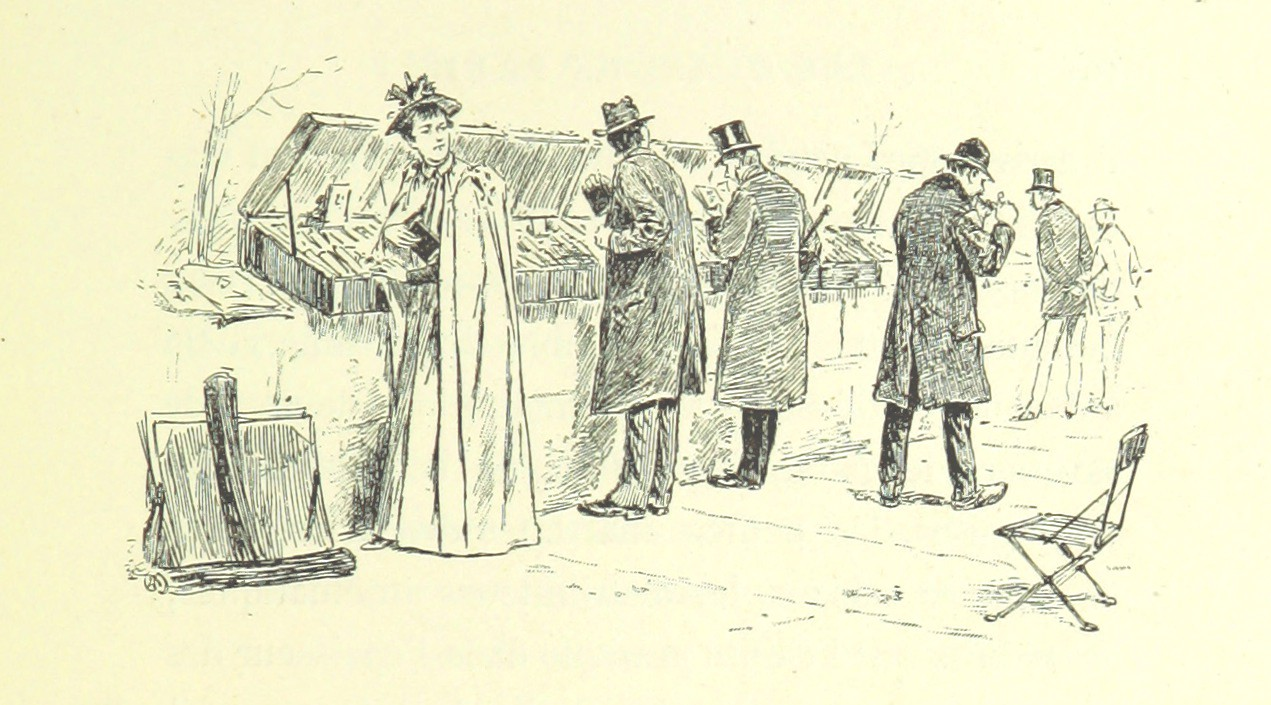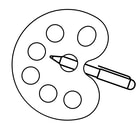|
Beneath the Deerstalker Cap Here we have, in short order and close proximity, as they often were, the principal characters of one of the best-known detective series in English literature, tales of the exploits of the great crime-solver Sherlock Holmes, that inimitable, indomitable, irascible but always intriguing man of genius, and man of many disguises, who is (not supposed to be) seen here, gumshoeing incognito as a common labourer, perhaps wandering through the market on his way to a tavern after a long day’s work, and yet his superior camouflage becomes superfluous when it is betrayed by the obligatory lighting of his pipe—or is this, in fact, an intentional act to reveal himself (an act designed to appear as if unwitting) in order to provoke the slightest hint of obvious attention from the woman at the left, whom he knows to be his arch-nemesis, of equal but dark genius, Professor Moriarty, also in disguise, pretending to steal a book in order to provoke the slightest hint of obvious attention of Sherlock Holmes, whom he knows must be snooping about in some form or other, but in a masquerade unknown to him at the moment? This spy-versus-spy story is yet another which will inevitably be revealed to us by the very able and affable physician and raconteur Dr. John H. Watson, who is standing with his cane under his arm (not just a walking cane carried for style, but a necessity to aid his gait due to a war injury in his youth) who, in his present, intent concentration on another author’s detective story (fiction, of course, unlike the factual accounts he writes of Holmes’s incredible successes as a protagonist in pursuit of perpetrators), may or may not be fully aware of the Professor’s attempts to tease Holmes out of his camouflage, but will eventually fill in all the blanks of the story before it is published. Meanwhile, Dr. Watson himself is being intently scrutinized by the adequately competent professional to his left, Inspector G. Lestrade of Scotland Yard, often called upon by Holmes to play a useful role when four hands are not adequate for the task, who realizes that the woman on his left may indeed be the notorious Professor Moriarty whom they are trying to catch in the act, “in flagrante delicto,” that is to say, to catch him red-handed without being red-herringed by him once again. Dr. Watson would sometimes describe the inspector, in print, as “a little sallow rat-faced, dark-eyed fellow” and “a lean, ferret-like man, furtive and sly-looking”, but would also give him credit for being “one of the best detectives at Scotland Yard,” (not necessarily including that this is chiefly because Holmes regularly allowed the Inspector to take credit for the cases which Holmes himself had solved). And encompassing all of these players, ever present, but visible only in the background, is Sir Arthur Conan Doyle, the author of four novels and fifty-six short stories featuring Sherlock Holmes. Not all of the great detective’s tales have been told, including the one for which this sketch was created, which may make this one of the most fascinating of those few Sherlock Holmes mysteries never resolved for our satisfaction. Ken Gosse Ken Gosse usually writes light, metric, rhymed poetry full of whimsy and humour, but has selected a prose format for this ekphrastic story. First published in First Literary Review–East in November 2016, his writing is also in Pure Slush, Home Planet News Online, The Ekphrastic Review, and others. Raised in the Chicago suburbs, now retired, he and his wife live in Mesa, AZ, with rescue dogs and cats underfoot.
0 Comments
Your comment will be posted after it is approved.
Leave a Reply. |
The Ekphrastic Review
COOKIES/PRIVACY
This site uses cookies to deliver your best navigation experience this time and next. Continuing here means you consent to cookies. Thank you. Join us on Facebook:
July 2024
|




